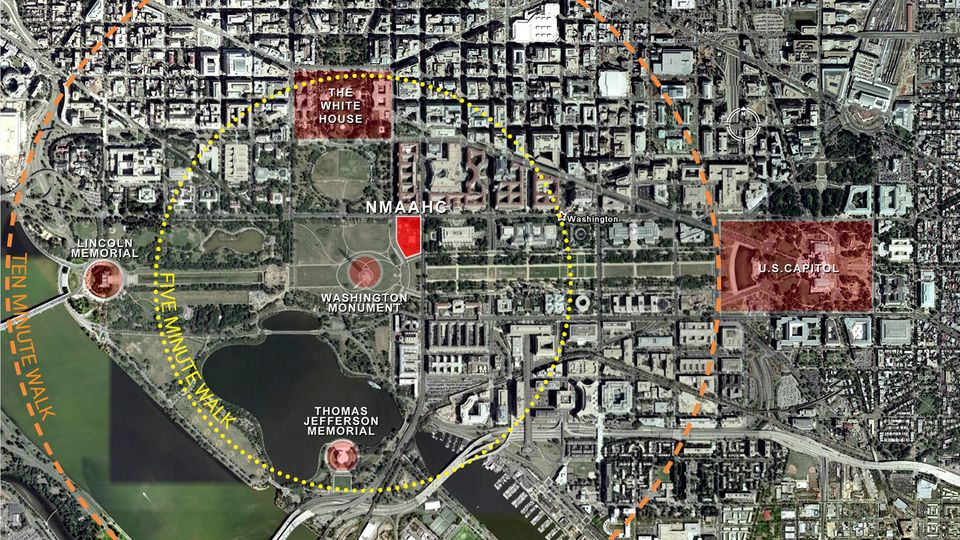
The site for the National Museum of African American History and Culture will be just northeast of the Washington Monument and west of the National Museum of American History.
In light of the recent passing of both Rosa Parks and Coretta Scott King, Americans may take solace that some progress has been made toward realizing an institution that will pay tribute to them both: the National Museum of African American History and Culture (NMAAHC). Specifically, the Smithsonian Institution’s Board of Regents selected the site for the future museum. It will be located on a patch of ground near the Washington Monument. Among the four sites that were under consideration, I think the final selection is easily the most prestigious and visible spot.
It will still be some time before ground breaks on the museum; as Rob Goodspeed notes in the DCist article linked above, “the museum has only existed on paper for two years, and the Smithsonian selected Lonnie Bunch, a former Smithsonian curator and head of the Chicago Historical Society, to be director of the museum last March.” An enormous amount of work must be done between now and the museum’s anticipated opening in 2016, but I imagine that for those who have been waiting to see the museum come to fruition, the time will pass quickly
In the Washington Post, museum-beat reporter Jacqueline Trescott caught up with one of the museum’s congressional advocates, Rep. John Lewis (D-GA):
'I am more than happy and pleased,' Lewis said yesterday afternoon. 'I’m gratified and thankful that the Board of Regents saw fit to name this site for the museum. The Mall is really the front door to America, the front door to our democracy. If you want to see America and know America, including the history of the struggles, the Mall is the place to be.'
Lewis was driving on the Selma to Montgomery National Historic Trail, which commemorates the famous 1965 civil rights march, when he got the news. Lewis, a civil rights worker in 1965, was beaten and almost died at the hands of police at the Edmund Pettus Bridge in Selma on “Bloody Sunday” when blacks began the historic march.
Stunning that one life can so ably illustrate a society’s transformation over a generation. And it’s fantastic that the next part of Lewis’s story arc includes the realization of this museum.



















